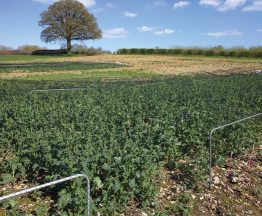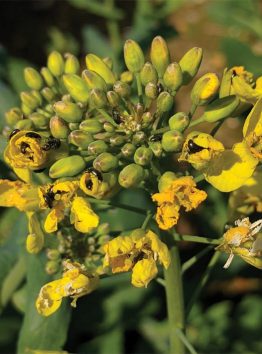Over and over and over again
What happens when we grow the same crop for 173 years in a row?
In the fall of 1843, two men (studying the manufacture and effect of inorganic synthetic fertilizer) planted a replicated, multi-variable winter wheat trial. This summer, the employees and researchers of that institution – Rothamsted Research in Harpenden, U.K. – harvested the 172nd wheat crop from that trial, adding data to the longest running, single-crop agricultural trial on the planet. The power of such a dataset is nearly incalculable.
Treatments over that nearly two-century trial have remained remarkably constant, only being modestly updated to allow for relevance in modern cropping systems. These have included the introduction of herbicides to replace hand weeding, fungicides, various fertilizer and manure regimes, and the introduction of more modern, semi-dwarf wheat varieties.
Data garnered from these trials show remarkable trends in productivity and soil quality. Several of the trials have received neither synthetic fertilizer nor manure over the course of the trial, others have received no fungicide or herbicide. The researchers have kept samples of not only the harvested grain and soil from each plot, but also the raw rainwater falling and water collected from the tile drainage below each plot.

The dataset is obviously too massive to even attempt to summarize in a short article, but the highlights really emphasize the need for constant monitoring of pH, as the trial needed to be continuously limed to stay at a pH conducive to plant growth. Arguably the most interesting aspect, and hence my interest as a canola agronomist, is the identification of pathogen-suppressive soils. Under continuous wheat cropping, take-all of wheat (a fungal disease) becomes much less severe than the disease on wheat in rotation or in a fallow regime. The mechanism is not well understood, but has implications for one of the newer trials starting: continuous oilseed rape (OSR), a sister crop to the spring canola we grow in Canada.

Now entering its eleventh year, continuous OSR is set to be the next long-term trial added to the eight existing trials. Long-term trials express their value not so much in a single year of yield data, but through the analysis of many years of trends and conditions. The data – and samples – already collected from the wheat and grass experiments lend an interesting insight into the effects of climate change, nuclear fallout and management practices.
In addition to the long-term trials, Rothamsted also devotes an incredible amount of resources to sustainable cropping systems and integrated pest management (IPM). Over the course of the Rapeseed Congress and various other international workshops, I have had the opportunity to present with one of the researchers, Dr. Samantha Cook, who specializes in IPM research. Her work has centred around a pest we don’t have in Western Canada yet: the melegethes pollen beetle. Her research blends climatic conditions with plant stand density and economics to develop thresholds and predictive models for the most economical time to enact chemical control of the pollen beetle. This beetle is devastating to yield all over northern Europe, if left uncontrolled.

One of the aspects that make a crop attractive to insect pests is colour. This has been observed in various ways, with various pests. One of the more interesting approaches, from an IPM perspective, has been the use of coloured petals to decrease the attractiveness of the oilseed rape to the pollen beetle. White and yellow flowers were highly attractive to the beetles while red and blue petals were much less attractive. Field-scale work of this magnitude has not been performed in Canada, but could promise a non-insecticidal approach to dealing with pests such as the cabbage seedpod weevil and the melegethes pollen beetles, when they do arrive in Western Canada.

Many of the trials, however, do show the necessity of judicious insecticide use in cropping systems. Dr. Cook enacted a new trial using turnip as a barrier crop around winter OSR. As the turnip flowers earlier (potentially attracting pollen beetle) and another of the OSR pests has a preference for turnip (cabbage stem flea beetle), the idea was that farmers could manage these insects without the use of insecticidal seed treatment or foliar applications to the OSR. The results have been less than encouraging. In the first year of the trial, the OSR was eaten entirely, leaving behind happily flowering borders of turnip. Clearly, insecticides will continue to be an important part of crop production.
Lessons learned in England, though not always directly applicable to the Canadian cropping systems, certainly give us experience to draw on when new pests emerge or when field conditions change.





